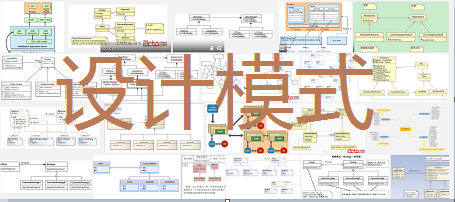
前言
又来梳理知识点啦!
在有的时候我们要多次使用某个类中的公有实例方法,我们通常的做法是,先new一个该类的实例,然后再调用该类的这个方法,调用完毕后这个类也就变成垃圾。这种调用方式如果出现的频率很高,会在对象生成和内存占用上浪费很多的资源,一个对象的创建和销毁是很占资源的。
于是,伟大的程序员们想到一个好办法,尝试重用现有的同类对象,如果未找到匹配的对象,则创建新对象。经典的享元模式中,是使用一个map来存储对象,相当于是一个对象工厂,客户端每次都从享元对象工厂中获取对象。
定义
使用共享对象可有效的支持大量的细粒度对象
使用场景
- 系统中存在大量的相似对象
- 对象没有特定的身份,状态都较接近
- 需要缓冲池的场景
使用方法
享元模式是一种思想,一种避免多次重复创建对象的编程思想。
我们主要是要创建一个享元工厂,来生产我们的享元类。这样的享元工厂有N种写法,我们常见的是使用map来构造享元工厂,来看一个享元工厂的demo
1 2 3 4 5 6 7 8 9 10 11 12 13 14 15 16 17
| import java.util.HashMap; public class ShapeFactory { private static final HashMap<String, Shape> circleMap = new HashMap(); public static Shape getObj(String color) { Circle circle = (Circle)circleMap.get(color); if(circle == null) { circle = new Circle(color); circleMap.put(color, circle); System.out.println("Creating circle of color : " + color); } return circle; } }
|
Android中的享元模式应用
应用的话,若我说,我们编写的ViewHolder都可以归类为享元工厂的存储器。几乎到处是应用,不过最明显的是Handler中Message的应用。
例如我们发送个0给handler自己。
handler.obtainMessage(0).sendToTarget();
我们进去看Handler的源码,obtainMessage如下
1 2 3 4
| public final Message obtainMessage(int what, int arg1, int arg2, Object obj) { return Message.obtain(this, what, arg1, arg2, obj); }
|
我们发现,其中调用了Message.obtain,我们再去看Message的实现
1 2 3 4 5 6 7 8 9 10 11 12 13 14 15 16 17 18 19 20 21 22 23 24 25 26 27 28
| public static Message obtain(Handler h, int what, int arg1, int arg2, Object obj) { Message m = obtain(); m.target = h; m.what = what; m.arg1 = arg1; m.arg2 = arg2; m.obj = obj; return m; } public static Message obtain() { synchronized (sPoolSync) { if (sPool != null) { Message m = sPool; sPool = m.next; m.next = null; m.flags = 0; sPoolSize--; return m; } } return new Message(); }
|
我们可以看到,sPool指向的是一个链表,其实这个链表是存储我们用过的Message的,当我们obtain一个Message的时候,会去取链表中的第一个,并把sPool指向下一个,同时把取到的置空。
1 2 3 4 5 6 7 8 9 10 11 12 13 14 15 16 17 18 19 20 21 22 23 24 25 26 27 28 29 30 31 32 33 34 35 36
| public void recycle() { if (isInUse()) { if (gCheckRecycle) { throw new IllegalStateException("This message cannot be recycled because it " + "is still in use."); } return; } recycleUnchecked(); } void recycleUnchecked() { flags = FLAG_IN_USE; what = 0; arg1 = 0; arg2 = 0; obj = null; replyTo = null; sendingUid = -1; when = 0; target = null; callback = null; data = null; synchronized (sPoolSync) { if (sPoolSize < MAX_POOL_SIZE) { next = sPool; sPool = this; sPoolSize++; } } }
|
我们可以知道Message的享元模式不是使用的传统的map方式,而是自己构建一个链表,灵活使用我们的享元模式思想才是重点。
到了最后,我们可以思考一下,ListView中每个View的创建是不是也用了享元模式呢?
谢谢大家阅读,如有帮助,来个喜欢或者关注吧!
本文作者:Anderson/Jerey_Jobs
博客地址 : 夏敏的博客/Anderson大码渣/Jerey_Jobs
简书地址 : Anderson大码渣
CSDN地址 : Jerey_Jobs的专栏
github地址 : Jerey_Jobs

